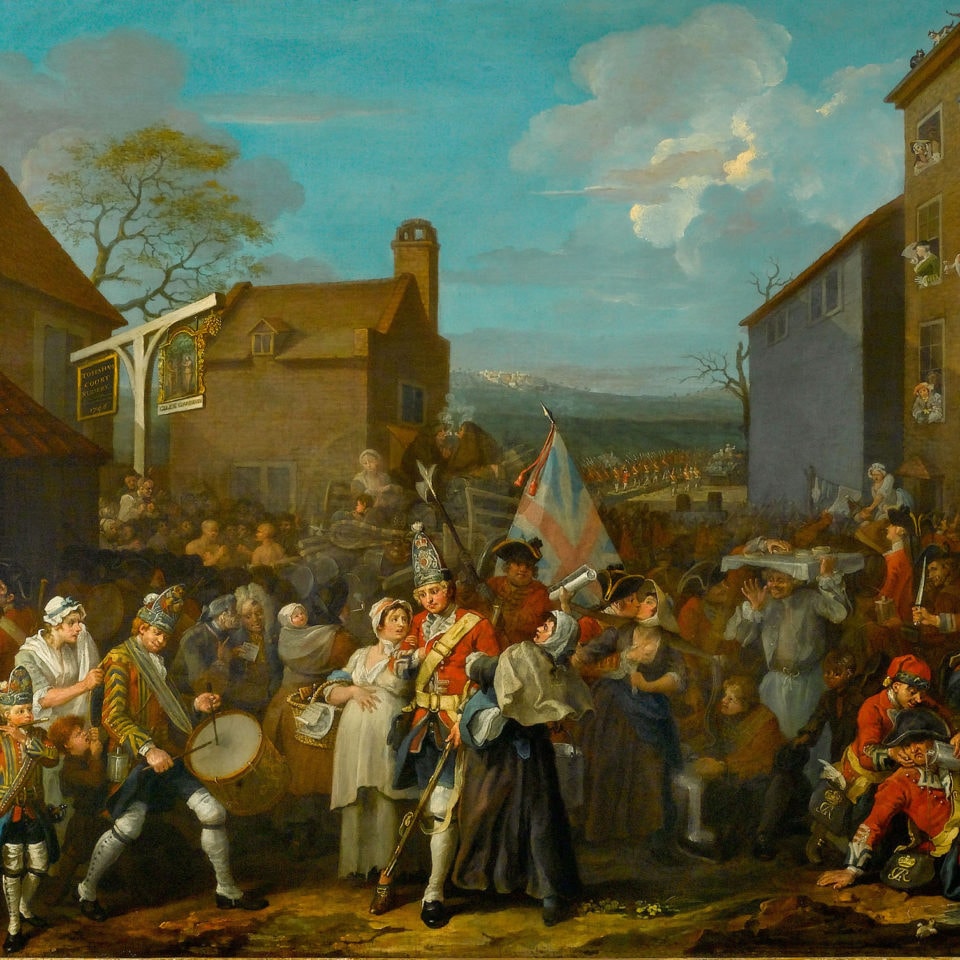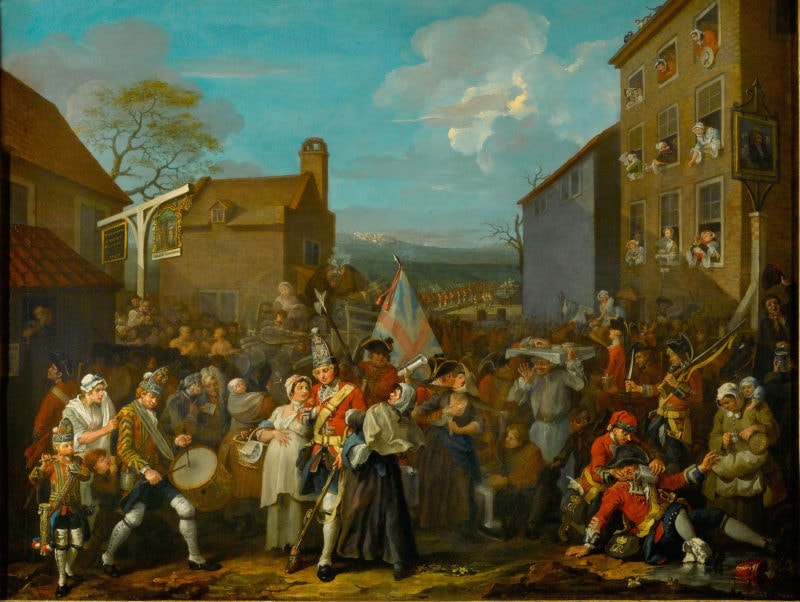Contemporary commentary
In this 1750 painting, Hogarth offers us a noisy, chaotic, humorous version of events from the 1745 Jacobite rebellion. At the top of the Tottenham Court Road on the northern edge of London, Guardsmen are gathering in preparation for their march to camp on Finchley Common. The clamour of the scene has been intensified by the news: Bonnie Prince Charlie’s invading Jacobite army had just reached Derby. The soldiers must be in place to defend London.
Hogarth’s painting is divided down moral lines. The left of the canvas represents healthy, patriotic, Protestant Britain, embodied in ale drinking at the Adam & Eve tavern and manly boxing, while the right is a roll call of vices. The main evil presented is Jacobitism, the movement to restore the Catholic House of Stuart to the British throne. Towards the right, an inebriated soldier reaches for gin, while street vendors are robbed and assaulted. Below yowling cats, harlots shout prayers and farewells to the departing soldiers from the windows of a brothel.
At the centre of The March of the Guards to Finchley is a Grenadier of the 1st regiment of Foot Guards, caught in a moment of indecision between the two sides – past and present, life and death, duty and desertion. Hanging on the arm of the Grenadier is his pregnant girlfriend, who sings one of the patriotic ballads she peddles. Tugging on his other arm is a Catholic woman who shouts and waves Jacobite propaganda – perhaps an ex, reminding him of previous loyalties.
About the artist
William Hogarth was a leading British artist of the eighteenth century. He is best known today for his series of sequential paintings such as The Rake’s Progress and Marriage-a-la-Mode, which he reproduced and sold as engravings, which were and remain hugely popular. Hogarth’s work engaged squarely with the world around him, not as literal records of places or events, but as complex political, social and moral comment. He sought to raise appreciation for British Art, so it enjoyed the same level of esteem as enjoyed at the time by artists from continental Europe.
Hogarth used his creativity to effect social change and to direct awareness to particular causes and issues. His support for the Foundling Hospital was unstinting and practical, whether using his artistic skills or supervising wet nurses fostering children for the Hospital in and around Chiswick, where he had a home.

